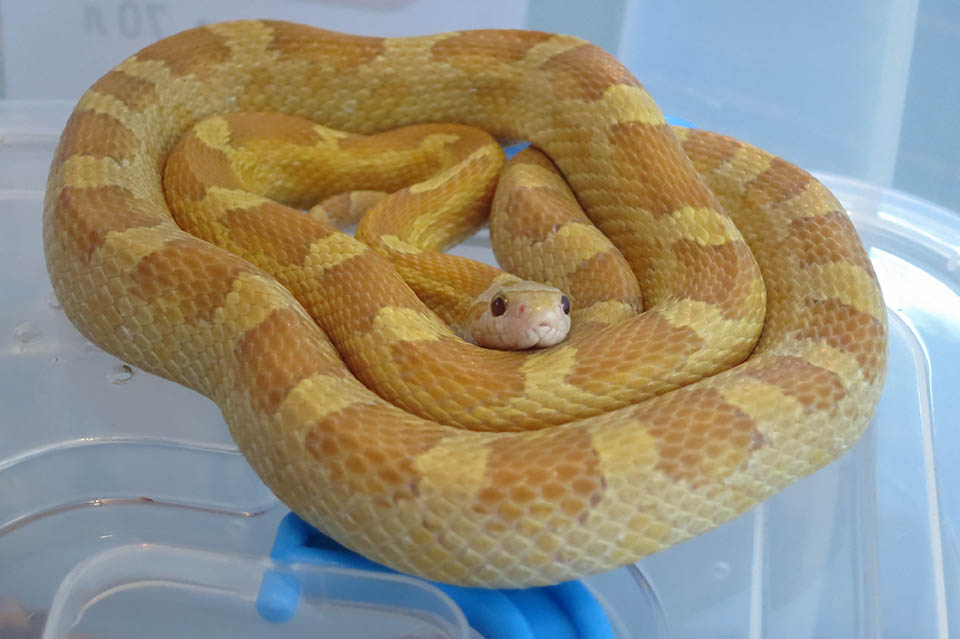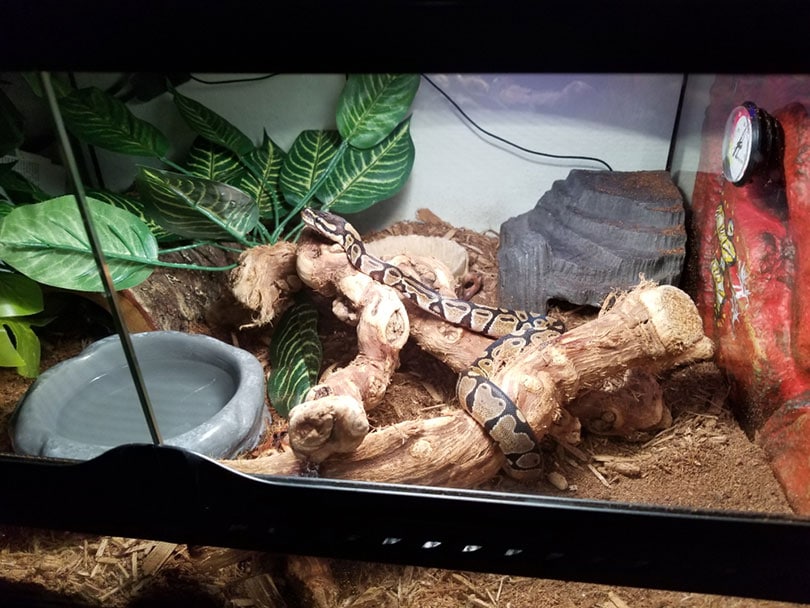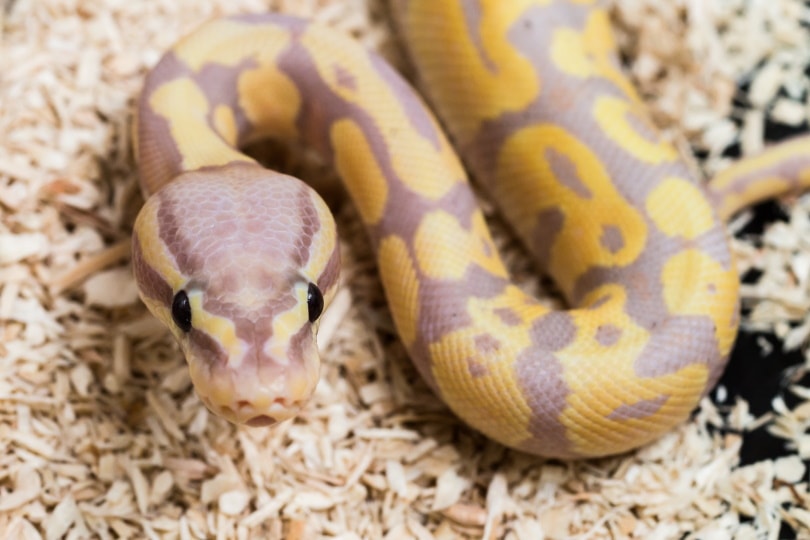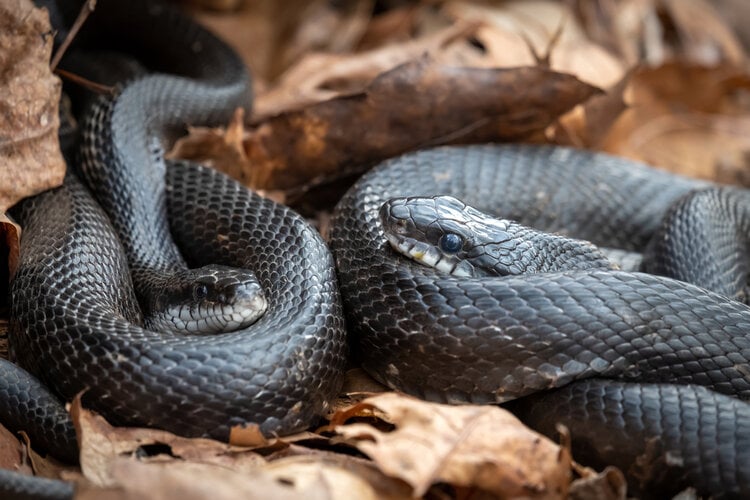
Snakes are fascinating animals with a unique anatomy that leaves us questioning how they mate and reproduce. While most snakes do reproduce sexually, there are some instances where asexual reproduction is possible. There is a lot to learn about snake reproduction and how the process allows females to lay eggs up to twice per year. Whether you desire to learn the basics or simply want to obtain a better understanding of the process, this article addresses all of the questions you have about how snakes mate, lay eggs, and even how to tell the difference between males and females.
Basic Snake Information
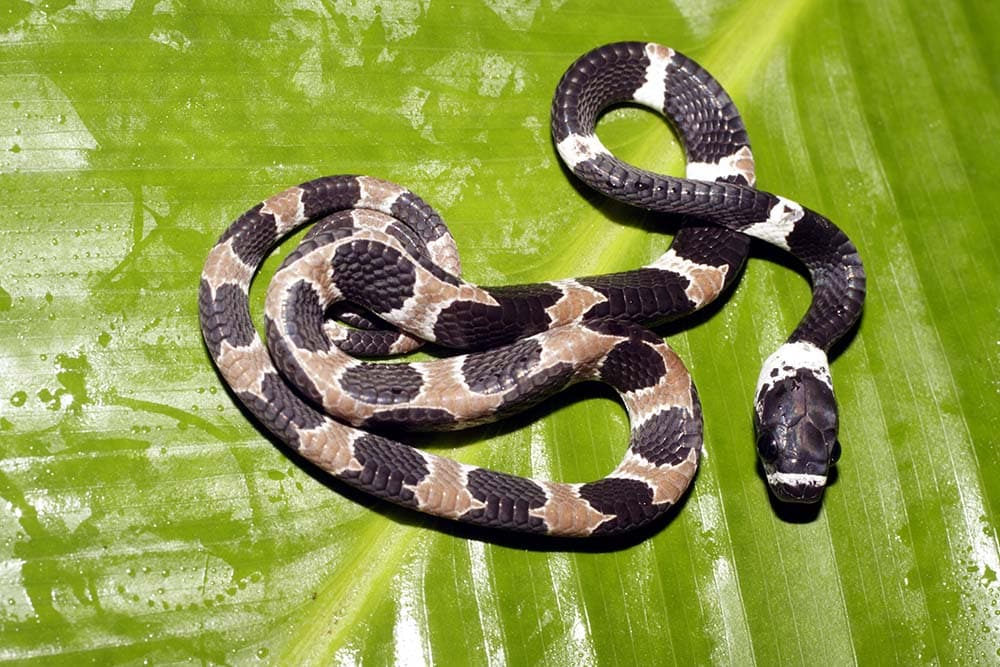
Snakes live on every single continent in the world except Antarctica. They have become an important species in nature, and there are over 3,000 species of wild snakes, with each kind adapting to a wide variety of habitats. Snakes usually spend their lives in solitude and only eat a couple of times per week, but there are a few weeks out of the year where breeding makes them interact with one another.
Are Snakes Sexual or Asexual?
A majority of snakes are born from sexual reproduction. Sexual reproduction means that two parents mate with each other. The male uses his hemipenes in order to fertilize the female eggs. Surprisingly, there are also some snakes that have produced asexually. Asexual reproduction usually happens when a female is unable to find a male in the wild to fertilize her eggs.
Scientists once believed this type of reproduction was rare, but there is more and more evidence to show that there are more snake species that reproduce asexually than they expected. Some of the known snake species to perform asexual reproduction are the Copperheads, water snakes, Cottonmouths, Pit Vipers, and some species of boas. There is one species, the Brahminy Blind snake, that must reproduce this way.
Snake Reproduction
We mentioned before that most snakes are born as a result of sexual reproduction. Snakes are sexually mature and ready for mating between 2 and 3 years old, though some have to wait until they are 4 or 5 years old. The mating season for snakes takes place during the spring and summer because it helps keep the eggs warm even though they are cold-blooded. In warm, tropical climates, the snakes are able to breed year-round. However, this could change depending on the weather, if they don’t have enough food, or if they simply don’t want to breed.
Some adult snakes gather in one area and compete with each other in order to mate with the nearby females. This gathering is called a mating ball and is fascinating to watch if you ever come across it. The males will not give up trying to mate until there is zero chance of success. The mortality rate is higher in young snakes, so they lay eggs more often in hopes that their offspring will survive and their DNA will carry on. Once copulation occurs, the snakes go on their way and go back to their solitary lives.
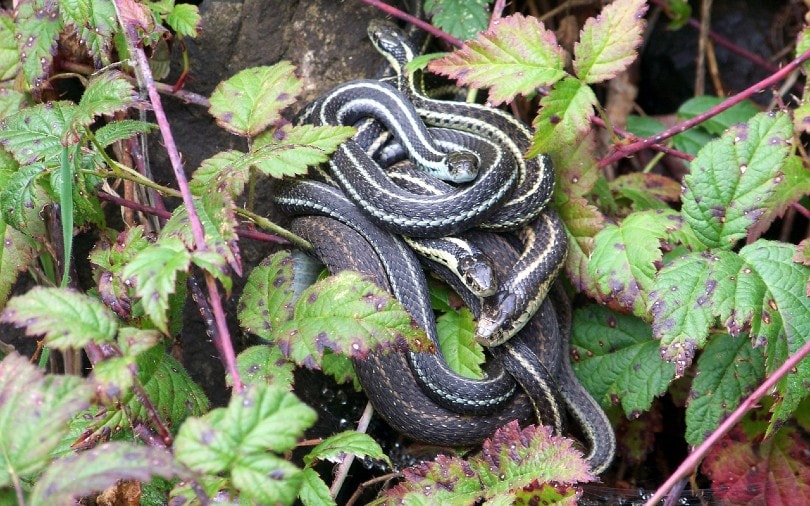
How Does a Snake get Pregnant?
When female snakes are ready to mate with males, they release a trail of pheromones that a male can follow when he picks up the scent. He continues down the path until he reaches her. Courtship happens when the male snake rests his chin on the back of a female’s head. She is only willing to mate if she lifts her tail to allow him to wrap himself around her until their cloacas, a chamber where they reproduce and expel waste, are lined up.
How It Works
The male then extends his hemipenes that come out of his cloaca, and he fertilizes the eggs that are still inside the female snake. This process could take anywhere from an hour to a full day.
Some snake species have spurs on their hemipenes that perfectly match up with a female’s body of the same species. This prevents them from reproducing with the wrong type of snake. Like most female animal species, the ladies prefer to reproduce with the biggest and strongest suitors. There are also some snakes with two different hemipenes, each one connected to a different testicle. This allows the snakes to alternate the sides that they use to release as many sperm cells as possible.
Post-Mating Development
Once mating is complete, the female allows the eggs to develop inside of her and the shells start to develop. After about one month, she is ready to lay them. Females prefer to lay eggs in a shallow nest. The eggs are covered in mucus to hold them together and keep them from rolling outside of the nest. Many females leave their eggs once they are laid, and the babies are left to fend on their own. Baby snakes are born with all the instincts necessary to survive from the moment they hatch.
While a good majority of snakes lay eggs, there are a few that birth live babies, like garter snakes and boa constrictors. This happens when the eggs don’t fully develop while inside the mother. Instead, they hatch inside of her and make their appearance to the world once she is ready to lay them. Many females that give birth to live babies eat their young.
Interesting Facts
How to Tell the Difference Between Males and Females

It is challenging to know whether you have a male or female snake because neither of them has external sex organs. Their organs are inside the cloaca. Males have two hemipenes and testes, while females have a more complex reproductive system with an oviduct to help with reproduction.
Female snakes are usually larger than their male counterparts, and males have thicker tails. If you’re unsure, ask a veterinarian or snake expert to help you tell the difference. They are able to insert a lubricated rod into the cloaca. If the rod goes inside a shallow distance, they know it is a female because she doesn’t have hemipenes. Leave this method of determining the sex to an expert.
Can Different Species Mate with Each Other?
It is possible to crossbreed one snake species with another, but it is most successful when the two snakes are closely related. When crossbred snakes are born, they are already fertile and can produce young on their own. Interestingly enough, this isn’t true of other hybrid animal species.
The 7 Helpful Tips for Breeding Snakes
Start by preparing your snakes to breed by getting them sexed to determine you have both a male and female.
Your female is ready to mate if she lies down near the male and is relaxed. Reintroduce snakes every day until the female is no longer interested. Once she lays eggs in the nest, either keep them or sell them if you aren’t able to care for them.
Hatching Snake Eggs
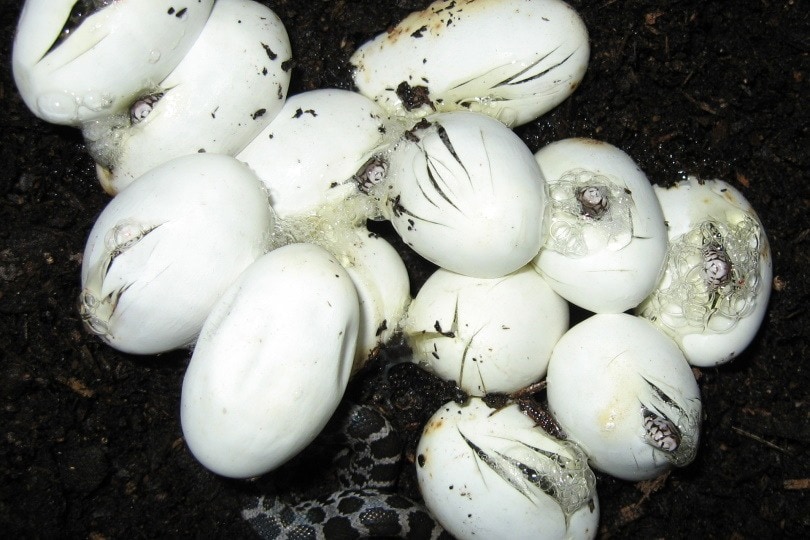
Move the female out of the enclosure once she hatches her eggs and buy an incubator to keep them warm. Do not turn the eggs once they are in the incubator. Ones with water baths are best because they provide humidity and keep the heat evenly distributed. Keep them between 82°F and 88°F until they hatch.
Taking care of baby snakes is a big challenge. They don’t like to eat right away because they have enough food reserved from their yolks. Feed your hatched snakes some pinkie mice or other very small foods. Before giving them away, make sure they are able to eat on their own.
Related Read:
Conclusion
Although most snakes produce sexually, there are some that don’t need a mate to reproduce at all. Snakes are truly unique creatures, and their reproduction is an interesting topic to learn about. Even though they have all the instincts they need to mate on their own, it always helps to educate yourself on the entire process before trying it at home.
Featured Image Credit: samray, Shutterstock





